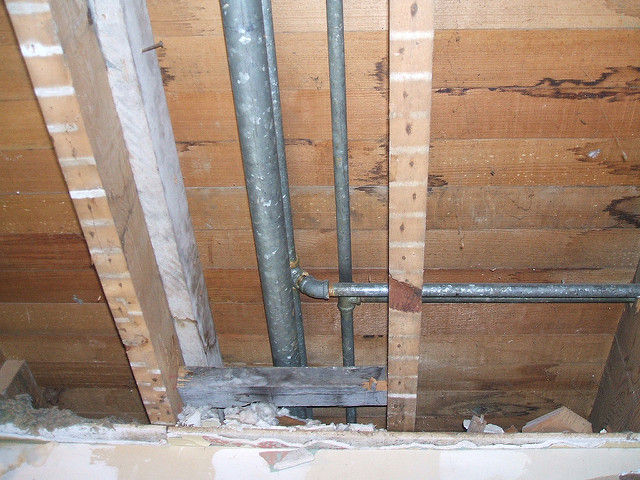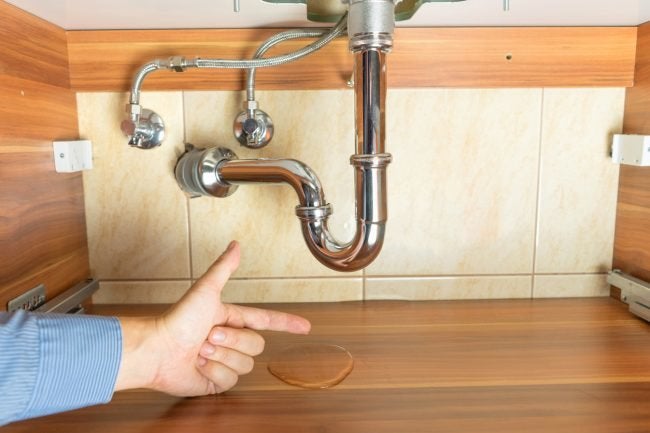Exactly how to Check If Your Home Has a Surprise Leakage
Exactly how to Check If Your Home Has a Surprise Leakage
Blog Article
They are making a number of great points about Detecting hidden plumbing leaks in general in this post directly below.

Early discovery of dripping water lines can minimize a possible catastrophe. Some tiny water leakages may not be noticeable.
1. Examine the Water Meter
Checking it is a proven way that helps you discover leakages. If it moves, that suggests a fast-moving leakage. This implies you might have a slow leak that can also be underground.
2. Inspect Water Intake
If you spot abrupt adjustments, despite your usage being the very same, it implies that you have leakages in your plumbing system. A sudden spike in your bill suggests a fast-moving leak.
A stable increase every month, even with the exact same routines, shows you have a slow leakage that's additionally gradually intensifying. Call a plumber to completely check your residential property, particularly if you really feel a cozy area on your floor with piping below.
3. Do a Food Coloring Test
When it pertains to water consumption, 30% originates from bathrooms. Examination to see if they are running appropriately. Drop flecks of food color in the container as well as wait 10 mins. There's a leak in between the storage tank and also dish if the shade in some way infiltrates your dish during that time without flushing.
4. Asses Outside Lines
Do not forget to examine your exterior water lines as well. Test spigots by affixing a garden tube. Needs to water permeate out of the connection, you have a loosened rubber gasket. Change this and make sure all links are limited. It will help get it properly examined and preserved each year if you have actually obtained a sprinkler system. One small leak can lose lots of water as well as surge your water bill.
5. Examine and also Assess the Situation
Property owners need to make it a practice to examine under the sink counters and also even inside cabinets for any type of bad odor or mold and mildew development. These two red flags suggest a leak so punctual attention is needed. Doing regular examinations, even bi-annually, can save you from a major issue.
Much more significantly, if you understand your residence is currently old, maintain a watchful eye on your heating systems, tubes, pipelines and so on. Look for stainings as well as compromising as most pipes and devices have a life span. They will also normally deteriorate because of tear and wear. Don't wait for it to rise if you think dripping water lines in your plumbing system. Call a professional plumber immediately so you do not wind up with a horrible mess in your house.
Early detection of dripping water lines can minimize a possible catastrophe. Some tiny water leaks may not be noticeable. Inspecting it is a proven method that assists you discover leaks. One little leakage can waste loads of water and increase your water expense.
If you think leaking water lines in your plumbing system, do not wait for it to rise.
How to Know If Your Home Has a Hidden Leak
Water Meter Reveals Inexplicable Water Usage
If you’d like to test whether or not there’s a leak somewhere in your home, you can do this using your water meter. Here is how to conduct the test:
Don’t use any water in your home for at least 30 minutes; this also means not turning on faucets or water-using appliances.
Go outside, and check your water meter for activity.
If your water meter shows that there was activity, even though no one was using any water, this proves that there is a leak in your home.Visible Mold or Mildew Growth
Leaks behind walls create moist, dark environments that allow mold and mildew to grow and thrive. Eventually, you might see mold growth forming on the wall closest to a hidden leak.
If mold is growing in an area that receives a high amount of moisture, such as a bathroom, it may simply be an indication that better ventilation is needed. However, if you see mold growth on a wall or the ceiling in an area where you would not expect, you probably have a hidden leak.
Musty, Mildew Odor
Sometimes you might not be able to see the mold or mildew that is growing as a result of a leak. However, the smell can give the problem away just as easily. If you catch a whiff of something musty, there’s a good chance that old water is collecting somewhere in your home that you can’t see.
Stained/Warped Walls, Ceilings, or Floors
When your home soaks up water, a variety of red flags can become visible, including ceiling stains, bubbling drywall, warped walls, and sagging floors. While these issues can be caused by excess humidity, they can also be signs that a pipe or plumbing connection has started leaking behind your walls.
Inexplicably High Water Bill
After a while, you get a general sense for what your water bill should be. If you own a pool or sprinkler system, your bill will tend to be higher during summer. However, if you receive a water bill that seems especially high, and you can’t figure out what caused it, then you may have a hidden leak somewhere that’s increasing your bill.
https://www.plumbingjoint.com/blog/2019/july/how-to-know-if-your-home-has-a-hidden-leak/

I'm just very focused on Hacks to detect leaks and I'm hoping you appreciated the entire article. Appreciated our article? Please share it. Let another person discover it. I love reading our article about Locating water leaks.
Report this page